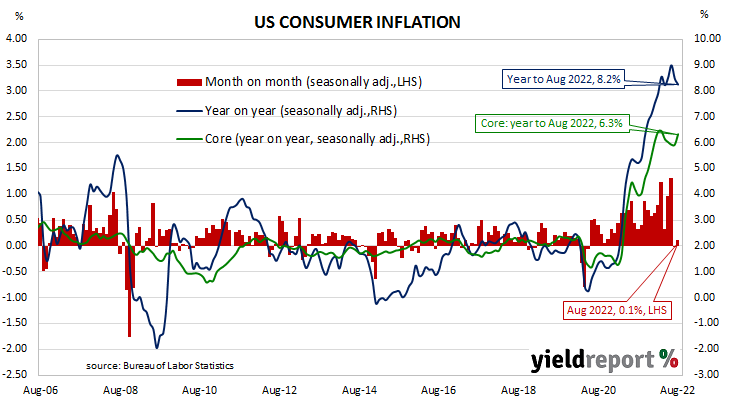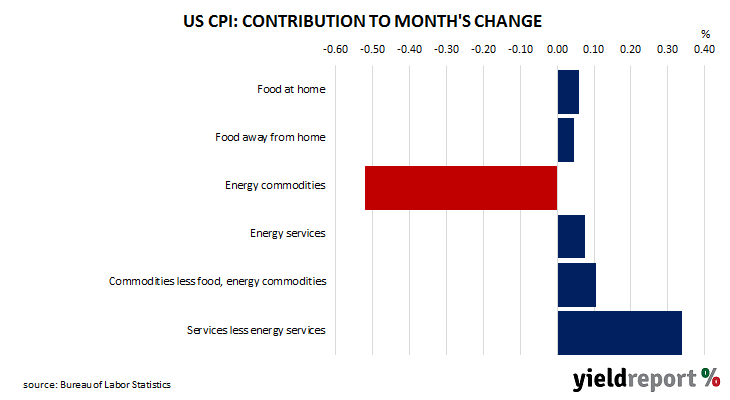Summary: US CPI up 0.1% in August, more than expected; “core” rate up 0.6%; core inflation strength led by services; long-term Treasury yields up, rate rise harden considerably; energy prices main driver, subtracts 0.5 ppts.
The annual rate of US inflation as measured by changes in the consumer price index (CPI) halved from nearly 3% in the period from July 2018 to February 2019. It then fluctuated in a range from 1.5% to 2.0% through 2019 before rising above 2.0% in the final months of that year. Substantially lower rates were reported from March 2020 to May 2020 and they remained below 2% until March 2021. Rates have since risen significantly.
The latest CPI figures released by the Bureau of Labor Statistics indicated seasonally-adjusted consumer prices inched up by 0.1% on average in August. The result was above the generally expected figure of -0.1% as well as July’s flat result. On a 12-month basis, the inflation rate slowed from July’s reading of 8.5% to 8.2%.
“Headline” inflation is known to be volatile and so references are often made to “core” inflation for analytical purposes. The core prices index, the index which excludes the more variable food and energy components, increased by 0.6% on a seasonally-adjusted basis for the month. The rise was double the 0.3% expected as well as July’s increase and the annual growth rate increased from 5.9% to 6.3%.
“What is perhaps most disconcerting in all this is that the strength in core inflation is very much service-sector led, items such as vehicle repairs, dental and hospital services, categories which are primarily driven by wage inflation,” said NAB’s Head of FX Strategy within its FICC division Ray Attrill.
Long term US Treasury bond yields moved higher on the day. By the close of business, the 10-year Treasury yield had added 2bps to 3.32% and the 30-year yield had gained 4bps to 3.48%. The 2-year yield finished 1bp lower at 3.53%.
In terms of US Fed policy, expectations of higher federal funds rates over the next 12 months hardened considerably. At the close of business, October contracts implied an effective federal funds rate of 3.16%, 83bps higher than the current spot rate. November contracts implied 3.755% while September 2023 futures contracts implied an effective federal funds rate of 4.11%, 178bps above the spot rate.
The largest influence on headline results is often the change in fuel prices. “Energy commodities”, the segment which contains vehicle fuels, dropped by 10.1% and subtracted 0.52 percentage points. Prices of non-energy services, the segment which includes actual and implied rents, added 0.34 percentage points after they increased by 0.6% on average.



